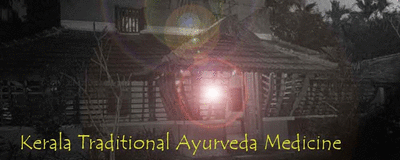
Surya Namaskar or the Sun Salutation is a most complete series of postures. It is a very good exercise which takes only a few minutes to do and serves as a warm-up routine before the practice of yoga asanas. It is one of the best home exercises requiring little space, only eight by three feet. Be sure to have enough space to lie down, and enough clearance to stretch the arms above the head while standing. Surya namaskar consists of a sequence of twelve postures performed continuously and combined with synchronized breathing. Each position counteracts the preceding one producing a balance between flexions and extensions. The postures are as follows: 1. Namaskar - salute. Stand erect with feet together and join the palms in the center of the chest in the style of Indian salute and inhale. Then exhale and push the hands down straightening and lowering the arms until the elbows touch the sides. This standing pose is also known as tadaasana.
2. Chandraasan - crescent moon pose. Inhale and raise the arms above the head and extend the spine backwards arching the back from the waist and moving the hips forward. Let the eyes follow the hands while relaxing your neck.
3. Hastapadaasan - bending pose. Begin to exhale bending forward from the waist and place the hands on the floor besides each foot. Relax with your head and neck in a bending pose.
4. Surya darshan - sun gaze. Inhale and putting your weight on the hands stretch the right leg behind like a stick resting on the toes. Bend the knee and place it on the floor with your weight on the left foot and arch the spine backward. Lift the head and neck first up and then back. Roll the eyes up. The left foot remains between the hands. 5. Himalayan - mountain pose. Exhale and bring the left foot back in line with the right. Lift the hips up high like a mountain. Push the heels and head down and look at the toes with the head down between the arms. 6. Sashtang dandawat - lie down. Put the knees down first and then bring the chest down. See that eight parts of the body are touching the floor including two feet, two knees, two hands, the chest and the chin or forehead. Sashtang means eight limbs and dandawat means paying homage by touching the floor. Make sure the hips are slightly raised above the ground. Inhale and exhale in this position. Keep the feet together. 7. Bhujangaasan - cobra pose. Lower the pelvis and abdomen to the floor. Inhale and stretch the toes on the floor. Raise your head slowly up, arch the spine and neck and look up. Keep your legs together and the elbows alongside the body slightly bent and keep the shoulders down. 8. Himalaya aasan. Exhale and wiggle your toes forward allowing your feet to rest on the soles while your raise the hips as your did in number 5.
9. Surya darshan. Inhale and bring the right foot forward and assume pose number 4 exactly as before. 10. Hastapadaasan. Exhale and bring the right foot forward and assume pose number 3. 11. Chandraasan. Inhale and stretch up in a standing pose with your arms up and bend backwards like in pose number
12. Namaskar. Exhale and stand erect bringing the hands back to the center of the chest with palms together as in pose number 1.
These twelve exercises are one round of surya namaskar. In the second round, stretch the left leg behind in surya darshan. Surya namaskar is done for an even number of rounds like 2-4-6-8-10 or 12 rounds each day. When you complete each round you should be standing in the same spot as you stood before. When the hands are placed with the palms down on the floor in the third pose they should remain there until the tenth pose. A healthy person requires a minimum practice of 12 or 16 rounds of surya namaskar each day. Beginners should start by practicing 2 rounds the first week, 4 rounds the second week and gradually increase in even number. Surya namaskar may be practiced slowly or rapidly if desired, to increase agility and stamina. Surya namaskar's sequence of postures is most scientific as it completes the circuit within the body. The cycle of blood flowing in and out from the heart into the right and left sides of the body is completed.
